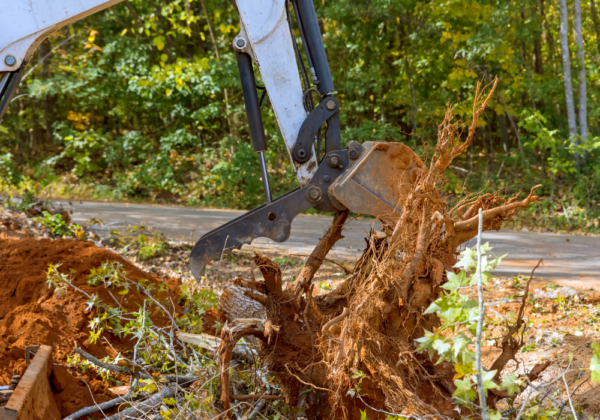In the world of construction, the foundation is everything. Efficient land clearing and grading are crucial steps that ensure a project’s success from the ground up. Without proper preparation, even the most meticulously planned projects can face delays, increased costs, and structural issues. For construction companies aiming to stay ahead in a competitive industry, understanding and implementing advanced land clearing and grading techniques is essential. This blog post will explore innovative methods for transforming the landscape of land preparation. You’ll learn about traditional practices, their limitations, and how new technologies offer significant advantages. By the end of this read, you’ll be better equipped to adopt these cutting-edge techniques in your projects, paving the way for improved efficiency and sustainability.
 Traditional Techniques and Their Limitations
Traditional Techniques and Their Limitations
Historically, land clearing and grading involved a mix of manual labour and heavy machinery. Bulldozers, excavators, and chainsaws were the tools of the trade. While effective, these methods come with several drawbacks.
First, traditional techniques are often time-consuming. Manual labour, even when assisted by machinery, can slow down projects, leading to extended timelines and increased labour costs. Additionally, traditional methods can be environmentally damaging. The use of heavy equipment and lack of precision can lead to soil erosion, loss of vegetation, and disruption of local ecosystems.
Another significant limitation is the lack of precision. Traditional grading techniques often struggle to achieve the exact specifications required for modern construction projects. This imprecision can result in uneven surfaces, complicating subsequent construction phases and affecting the overall stability of the structure.
Overview of Innovative and Sustainable Land Clearing and Grading Methods
Recent advancements in technology have introduced more efficient, precise, and environmentally friendly methods for land clearing and grading. One such innovation is the use of mulching machines. These machines quickly grind vegetation into mulch, which can then be used to enrich the soil. This method not only clears land efficiently but also promotes soil health.
Another groundbreaking technique is laser grading. This method uses laser-guided equipment to achieve a high level of precision, ensuring that the land is perfectly level. This is particularly beneficial for projects requiring exact specifications, such as sports fields or large-scale commercial developments.
Additionally, companies are increasingly adopting GPS and drone technology. GPS allows for real-time monitoring and adjustment of grading activities, while drones provide aerial surveys that help identify potential issues before they become problems. These technologies significantly reduce the margin for error and increase overall efficiency.
Benefits of Adopting New Technologies and Practices
The adoption of innovative land clearing and grading techniques offers numerous benefits. First and foremost is increased efficiency. Advanced machinery and technologies streamline the clearing and grading process, reducing the time and labour required. This efficiency translates to cost savings, allowing companies to allocate resources more effectively.
Precision is another significant advantage. Techniques like laser grading and GPS monitoring ensure that land is prepared to exact specifications, reducing the risk of structural issues down the line. This precision also leads to better water drainage and soil stability, which are critical for the longevity of any construction project.
Environmental sustainability is a growing concern in the construction industry. Innovative techniques like mulching and the use of eco-friendly machinery minimize environmental impact. By preserving soil health and reducing carbon emissions, companies can contribute to environmental conservation while also complying with increasingly stringent regulations.
 Challenges and Considerations for Companies Transitioning to Innovative Methods
Challenges and Considerations for Companies Transitioning to Innovative Methods
While the benefits are clear, transitioning to innovative land clearing and grading methods is not without challenges. One of the primary obstacles is the initial investment. Advanced machinery and technology can be costly, and companies must weigh these expenses against long-term benefits.
Training is another critical factor. Employees need to be trained to operate new equipment and understand the intricacies of advanced techniques. This can require additional time and resources, but it’s a necessary step to ensure successful implementation.
Lastly, companies must consider the regulatory landscape. While many innovative techniques are designed to comply with environmental regulations, it’s crucial to stay updated on local laws and guidelines. Ensuring that all practices meet regulatory standards can prevent legal issues and potential fines.
The construction industry is evolving, and so are the methods used for land clearing and grading. Innovative techniques offer a host of benefits, from increased efficiency and precision to environmental sustainability. While the transition may present challenges, the long-term advantages make it a worthwhile investment. The future of construction lies in innovation, and those who embrace it will lead the way in creating sustainable, efficient, and successful projects.


